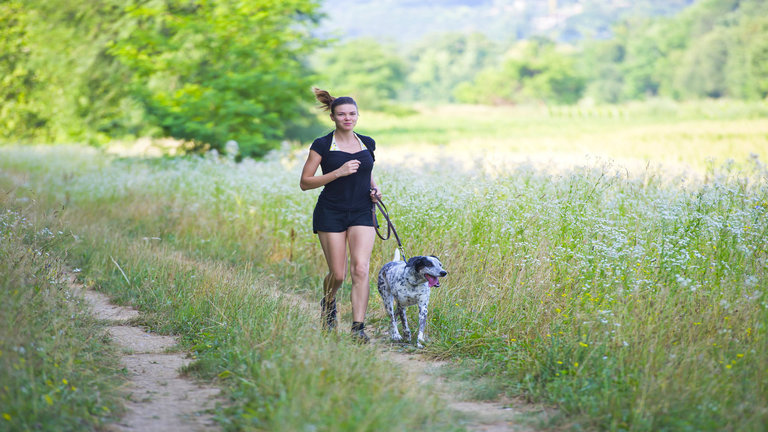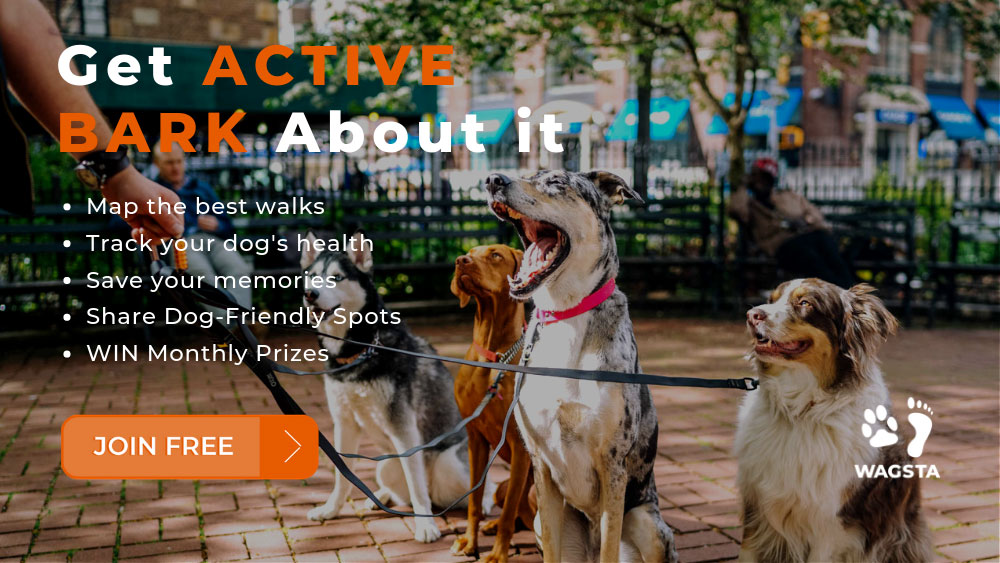How to Safely Commence a Dog Exercise Routine for your Overweight Dog
Dog exercise is beneficial for both humans and dogs! Whether it be playing in the back yard, walking at the park or swimming at the beach, the rewards of regular physical activity are impressive.
Improved mental alertness, improved cardiovascular output, improved mobility and musculo-skeletal health are just a few benefits you and your dog will reap. And of course there’s also the added incentive of increased calorie burn.
But aside from all these benefits the number one benefit for both humans and dogs is to HAVE FUN and FEEL HAPPY!
Before embarking on a dog exercise program there are several points to consider to ensure we do not cause our dogs harm.
Introduce dogs to increasing levels of dog exercise gradually.
Please do not employ a ‘boot camp’ mindset where your primary goal for dog exercise is weight loss. Successful canine weight management should commence in the kitchen not in the park, with 90% of a dog's weight loss achieved through calorie restriction. Regular dog exercise should be viewed as an aid to weight loss but not as the major player. Read more on this topic here: Is exercise a priority in helping dogs lose weight?
When it comes to exercise, too much-too soon will only end in tears for us and pain for our dogs.
Overweight dogs are prone to overheating and heat stroke.
And quite simply, heat stroke kills! Increased activity levels quickly cause a rise in body temperature especially when carrying excess body fat. Unlike humans, dogs are unable to sweat and so rely on panting to dissipate heat.
Excess weight negatively impacts on the cardiorespiratory system (through reduced heart and lung capacity, narrowed airways) further compromising heat loss via panting.
Overweight dogs are also at higher risk of soft tissue and joint injuries.
Excess weight puts a large amount of strain on joints, ligaments and tendons. Inactive and overweight dog tend to have poorly conditioned muscles and so weaken and fatigue quickly. Lameness, ruptured cruciate ligaments, carpal and foot injuries are all too common in overweight dogs.
To avoid these injuries start your dog exercise routine with safe, controlled exercise such as lead walking and swimming. High impact activities involving jumping should be avoided when commencing activity programs.

17 Tips when Commencing Dog Exercise
- Always have water available for your dog to drink (carry a collapsible bowl and a bottle of water if necessary)
- In hot climates reserve dog exercise sessions for the cooler parts of the day, early morning or late evening
- Don’t push it! Stop and rest if your dog is panting heavily or appears weak
- Incorporate water play or swimming whenever practical- this is great form of low impact exercise and avoids overheating
- Starting from scratch? Aim for 2 x 10 minute lead walks a day. Over the course of 3-6 months aim to increase to 2 x 30 minute walks daily.
- When starting out choose flat, even surfaces to walk your dog on. Avoid rocky or uneven ground.
- Ensure good paw care- keep your dog’s nails trimmed, avoid walking on hot asphalt or hot sand and avoid cold injuries such as frost bite- booties can assist.
- Assist your dog getting into and out of the car. Lower your dog to the ground rather than letting him jump out (avoid excess force impacting on the spine, elbows, shoulders and carpus). For large dogs, save your own back by purchasing a ramp.
- Increase your dog’s incidental activity at home- consider using treat balls to put some of their allotted daily food into, provide toys, play hide and seek.
- Set aside time in the household schedule for your dog’s daily activity. Share the fun around different family members.
- Don’t let feelings of guilt or shame stop you from venturing out. If comments are made by others try not to be defensive. Just explain that your dog has commenced a weight management program and that as part of it he is making a gradual foray into regular dog exercise. You’ll be surprised; those who may come across as the most disapproving of your dog’s weight in the first instance will often turn out to be your biggest allies and supporters.
- As fitness improves and your dog’s weight reduces provide more active sessions i.e. incorporate off lead play, uneven terrain or short jogs.
- As your dog nears their target weight, introduce obstacles, hills, fetch & catch games.
- Reserve more strenuous activities which impact on the joints for when significant weight loss has occurred. At this stage your dog's muscles and ligaments will have strengthened and the risk of injury will have reduced. Play it safe by always exercising caution to avoid overdoing things.
- A health check-up is recommended before commencing all dogs on weight management or dog exercise programs. In addition to assessing your dog’s underlying health status, veterinarians are able to help with diet recommendations, target weight calculations and they can prescribe treatments to help your dog. Quality of life and mobility of arthritic dogs frequently improve following prescribed anti-inflammatory remedies.
- Always remember parasite prevention for fleas and ticks. Keep worming up to date. The risk of parasites is heightened when out and about with other dogs and when entering bush land and countryside habitat.
- Should your dog have behavioural issues or poor on-lead skills, consider enrolling in training classes or seek help from an animal behaviorist.
Reached your dog’s healthy weight? Well don’t stop there…. when it comes being active with our dogs, the possibilities are endless. How about bike riding, skating, fly ball, agility classes, hiking, stand-up paddle-boarding, cani- cross and skijoring just to name a few!
Exercise does not need to be a chore. Regularly walking your dog and taking part in outdoor activities is about adventure and strengthening the special bond we share with our dogs. So get out there and enjoy your time together!

